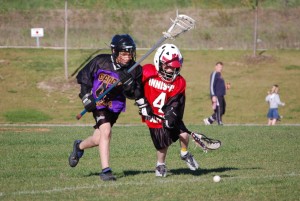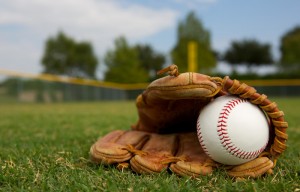‘Mixin’ It Up’ Does Wonders for Kids in Sports
Fall and winter sports season is upon us! Boys are playing football. Girls are doing their cheer routines at games.
Cross-country, field hockey, tennis, and volleyball players are in full swing at high schools across the country.
While kids are eager to jump right into these activities, injuries this time of year increase.

Why Do More Sports Injuries Occur in the Fall and Winter?
- Sudden increases in activity level
- Unpredictable weather and changes in playing surface. Shifting weather patterns are another factor that contributes to sports injuries in the fall and winter.
- Muscle fatigue – During the summer months, kids move freely. Suddenly, when school starts, students are cramped into an uncomfortable school desk for eight hours a day. The hips remain flexed at 90-degrees, and the brain focuses on keeping the hip flexors, hamstrings, and spinal erectors engaged to maintain a sitting position. Unfortunately, these are the opposite muscles the body needs to prevent common sports injuries.
What Are the Most Common Fall and Winter Sports Injuries and How Are They Prevented?
Slowly ramping up activity levels over the course of a few months leading into preseason can minimize the risk significantly.
Students should spend at least 10 minutes warming up every practice and devote twice as long to end-of-practice stretches to prevent injuries including:
- Tendon injuries
- Muscle pulls
- Stress Fractures
Middle-school-age children come in with growth plate injuries. A growth plate injury occurs at either end of the leg bone.
A damaged growth plate may lead to arthritis, crooked bones, or limbs that do not grow long enough — although these circumstances are rare. More often than not, kids rebound from a growth plate injury without any further consequences.

To prevent these injuries, be sure you oversee your child’s strength training to ensure he or she is not lifting too much weight too fast. You also want to see that your child is using the proper form.
Playing in extreme cold, certain medications, neurological disorders, metabolic diseases, and genetic factors are believed to all play a role in the development of growth plate injuries as well. It is important to speak with a sports medicine professional to determine whether your child may be at risk for a growth plate injury.
When high school athletes begin to get tired, they get sloppy. Fatigue is the number one factor in ankle sprains. Teach your child to recognize signs of fatigue so he or she can request a break if the coach doesn’t see it.
Some of these early signals may include some or all of the following symptoms:
- Inconsistent performance
- Decreased focus
- Shortness of breath
- Muscle twitches
- Depression or irritability
- Severe thirst
- Generalized weakness
- Nausea
- Muscle cramps
- Dizziness
- Headaches
According to Dr. Downer, “Mix it up, don’t just play one sport. Instead be diverse and try different types of sporting activities throughout the year. Staying active keeps you well-conditioned and less likely to experience an injury.”
If you believe you are suffering from a sports-related injury and need specialized orthopedic care, the orthopedic surgeons at OSS provide excellent treatment options for your injury. Please feel free to contact OSS at (206) 633-8100 to schedule an appointment.
Seattle Seahawks Injury Status
Football season is moving right along and our beloved Seattle Seahawks are 6-3 overall; ranking 10th in offense and 3rd in defense. There are several injuries on this season’s roster, including:

Coach Pete Carroll has cleared some of these players to return to the field but others are questionable for the rest of the NFL season. Of note, Zach Miller had undergone surgery and is on the injury reserve list and is not playing while Marcus Burley’s hamstring injury has sidelined him from playing for a questionable amount of time.
“With such devastating injuries to the squad up and down the line up, it reiterates the importance of preparation to prevent injury,” states Dr. Ruhlman.
The treatment protocol for football injuries varies and can range from basic RICE (rest, ice, compression, elevation) to surgery, with several options in between.
For all of these injuries, RICE can be improved with active cold and compression therapies to help speed up the healing process for injuries.
Cold compression therapy can also be used after surgery to help speed up the recovery process.

OSS hopes that all these players recover from their injuries and wish the Seattle Seahawks a great rest-of-the-season.
If you believe you are suffering from a sports-related injury and need specialized orthopedic care, the orthopedic surgeons at OSS provide excellent treatment options for your injury.
MLB World Series Injuries
Rounding the Bases to Catching Fly Balls
 The 2014 Major League World Series begins this week with a frenzy of predictions from the sports experts and fans from both the San Francisco Giants and the Kansas City Royals predicting that their respective team will win.
The 2014 Major League World Series begins this week with a frenzy of predictions from the sports experts and fans from both the San Francisco Giants and the Kansas City Royals predicting that their respective team will win.
Baseball, a game routed in tradition, history, superstition and sometimes, injuries.
Common Injuries
 More than 627,000 baseball injuries each year are treated by medical professionals, according to the U.S. Consumer Products Safety Commission. Baseball is not a contact sport, but contact with a ball, bat, or another player results in the most serious injuries.
More than 627,000 baseball injuries each year are treated by medical professionals, according to the U.S. Consumer Products Safety Commission. Baseball is not a contact sport, but contact with a ball, bat, or another player results in the most serious injuries.
The most common injuries include repetitive use injuries to the shoulder and elbow, muscle pulls, contusions, ligament injuries, black eyes, concussions and lacerations. Knee injuries also are relatively common.
Some of these injuries can be career ending if severe enough, as joint replacement sometimes does not work well for athletes.
Your feet also take a beating when playing baseball. Baseball players are at risk from various injuries, including:
1. Ankle sprains may occur while running, fielding balls, stepping on or sliding into bases. Sprains should be evaluated by a foot and ankle surgeon to determine the extent of injury, including possible peroneal tendon injuries or fractures. The foot and ankle surgeon will develop a treatment plan: failure to fully treat and rehabilitate a sprain may lead to chronic ankle instability and recurrent sprains.
2. Overuse or excessive training may sideline some athletes with Achilles tendinopathy or heel pain (often plantar fasiciitis, or calcaneal apophysitis in children and adolescents).
3. Contusions may occur from impact with the ball or contact with other players.
4. Cleats may pose challenges in the forefoot and aggravation of neuromas, sesamoids, bunions, and hammertoes. To stay at the top of your game, ensure that cleats are fitted properly and have injuries evaluated by a foot and ankle surgeon.
According to Dr. Reed, “While baseball is a less violent sport than football, athletes can be prone to foot and ankle injuries often due to the quick bursts of required running or sliding. Orthopedic foot and ankle surgeons are uniquely trained to provide expert care of baseball-related injuries, including turf toe, osteochondral defects, ankle instability and Achilles tendinitis or rupture.”
Good luck to both the Giants and the Royals! Here’s hoping no one gets put on the DL list during the series!
If you believe you are suffering from a sports-related injury and need specialized care, the physicians at Orthopedic Specialists of Seattle provide excellent treatment options available for you. Please feel free to contact OSS at (206) 633-8100 to schedule an appointment.
CrossFit Injuries – Are You Feeling the Pain?
 CrossFit is a mode of exercise that targets cardiovascular and respiratory endurance, strength, flexibility, mobility, stamina, power, speed, agility, coordination and balance. The workouts change daily and can be performed by individuals at all fitness levels.
CrossFit is a mode of exercise that targets cardiovascular and respiratory endurance, strength, flexibility, mobility, stamina, power, speed, agility, coordination and balance. The workouts change daily and can be performed by individuals at all fitness levels.
Most Common CrossFit Injuries
The most common injuries from CrossFit are from use of poor form with the exercises. Standard push-ups, handstand push-ups, push press, push jerk, kipping pull ups, hang power clean, hang power snatch, ring dips, overhead squatting, and many more are all great exercises at high intensity.
However, they are very stressful, especially on the shoulder – if you don’t have proper scapular positioning and proper stabilizing strength throughout the rotator cuff and scapula. So the next time you are performing these, focus on where your shoulder blade is positioned and try to avoid what we call “winging” by keeping the shoulder blade “pinched back”.
High Intensity Exercise
The intensity level of CrossFit pushes an individual to their limits every day and over time, overuse of the shoulder and other joints in the body can lead to an injury if not attended to prior to performing another CrossFit session. Studies suggest that constantly exercising at high intensity may even provoke overtraining — a drop in energy and performance that happens when the body isn’t able to fully recover from workouts.
Intermittent high-intensity exercise is a great way to get fit, but only when the body can recover. By not overdoing it, you avoid the risk of injury. If you are considering a CrossFit regimen, call OSS and schedule an appointment with one of our physicians about how to proceed in getting the most out of your CrossFit workout without injury.
According to Dr. Reed, “CrossFit is an exercise regimen that can lead to huge performance gains and improved athletic and cardiovascular function when performed correctly and safely. It’s important that each individual concentrates on good form and optimal nutrition and hydration, and keeps on the lookout for signs and symptoms of overtraining.”
If you believe you are suffering from a workout-related injury and need specialized orthopedic care, the physicians at Orthopedic Specialists of Seattle provide excellent treatment options available for you. Please feel free to contact OSS at (206) 633-8100 to schedule an appointment.
